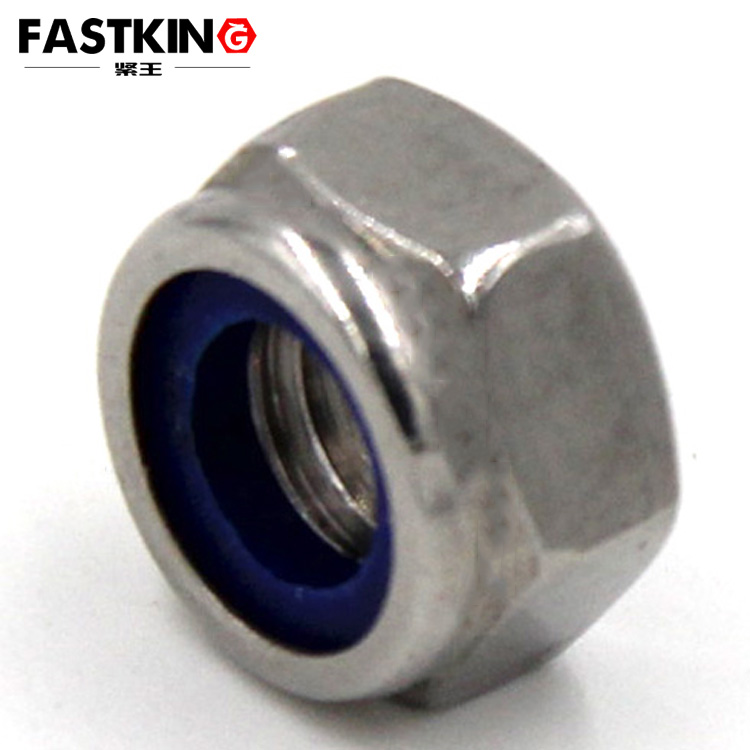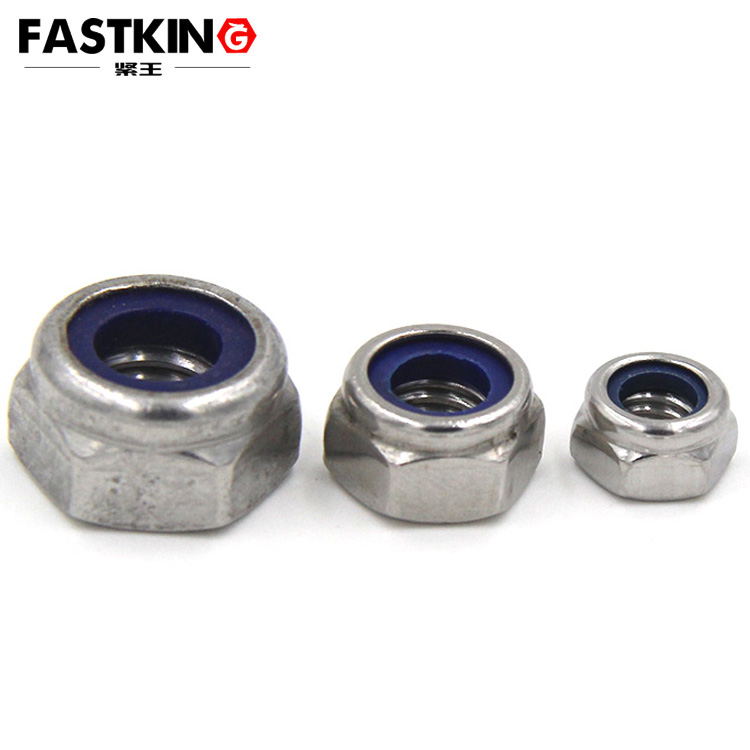Introduction
DIN985 is a German standard non-metallic insert locknut, also known as a nylon locknut or self-locking nut. This type of nut incorporates a nylon insert that utilizes the elasticity of nylon to create friction between the threads, preventing the nut from loosening in vibrating environments. Widely used in mechanical manufacturing, automotive, electronic devices, and construction, it is a highly efficient and reliable fastener.

Core Advantages of DIN985 Locknuts
DIN985 locknuts feature a high-quality nylon insert design that ensures the nut's strength and durability. The nylon insert has excellent elastic deformation capabilities, effectively preventing the nut from loosening. The nut body is made from high-quality carbon steel or stainless steel, with a surface treated by galvanizing or passivation to ensure excellent corrosion resistance.
In terms of mechanical properties, DIN985 locknuts support a maximum strength grade of 10.9, meeting the fastening requirements of most industrial equipment. They offer stable locking torque and excellent reusability, ensuring long-term reliable anti-loosening effects.
The nut features a standard hexagonal shape, making it easy to operate with a common wrench. The unique nylon locking design effectively prevents loosening caused by vibration, enhancing safety during use. Standardized thread specifications and dimensions ensure good interchangeability and compatibility.

Proper Use of DIN985 Locknuts
When installing DIN985 locknuts, ensure that the threads are clean and undamaged. Use an appropriate wrench for installation, avoiding excessive pre-tightening force. Pay attention to the nut's orientation, ensuring the nylon insert faces the fastened component. During tightening, follow the specified torque values to avoid over-tightening, which could damage the nylon insert.
For routine maintenance, regularly inspect the nut's locking status and retighten if necessary. Check the threads and nylon insert for any damage, and replace the nut if any issues are found. When storing, keep the nuts in a dry, ventilated area, avoiding direct sunlight and chemical corrosion.
Common issues include wear of the nylon insert and thread damage. These can be identified by visual inspection and checking the fastening status. Damaged nuts should be replaced promptly to prevent equipment failure.
Typical Applications of DIN985 Locknuts
In the field of mechanical equipment, DIN985 locknuts are widely used for fastening connections in machine tools, construction machinery, textile machinery, and other devices. Their reliable anti-loosening performance ensures stable operation. In the automotive industry, they are commonly used for fastening critical components such as engines, chassis, and transmission systems, meeting the demands of vibrating environments in vehicles.

In electronic device systems, DIN985 locknuts are used for fastening connections in precision instruments, communication equipment, control cabinets, and more. Their stable locking performance ensures reliable operation. In the construction industry, they are applied in key areas such as steel structures and curtain wall systems, providing reliable fastening connections for building safety.
Conclusion
DIN985 locknuts have become a benchmark in the anti-loosening fastener field due to their outstanding performance and broad applicability. With the development of Industry 4.0, DIN985 locknuts will continue to play a crucial role in emerging fields such as smart manufacturing and the Internet of Things, providing reliable fastening solutions for equipment.
